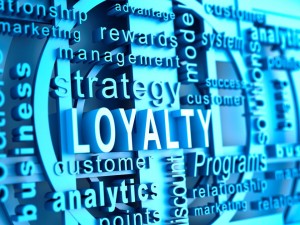There is some debate about the extent to which the internet of things (IoT) is affecting customer intelligence. We have the potential for something new: IoT could mark the end of segmented marketing and the start of “momentary marketing”’. But is this really happening yet? Current deployments give us some idea of how far this could go. Early adopter examples suggest IoT for customer intelligence will be an evolution.
Retailers are using IoT technology to help customers find the right products based on in-store geolocation and the customer’s profile. The French retailer Galeries Lafayette Paris-Haussman has launched a mobile app using geolocation to help customers find their way round the store. The app is free and available in 14 languages. It provides information and directions to in-store boutiques, restaurants and customer services based on the customer’s geolocation and any information they save about their favorite brands. The app also allows customers to share their location with friends on social media, adding extra value for brands.
Retailers are also using IoT technology to build customer loyalty in convenience shopping. For example, a US convenience store chain is aiming to turn convenience shopping on its head with the use of IoT technology. Once considered a "fast in, fast out", impersonal experience, the company is now aiming to change this. It is building brand loyalty through a connected network that allows customers to use their phones to locate stores, and pay, as well as receiving rewards and loyalty points. This is providing huge insights into customer behavior, and therefore improving both sales and inventory management.
Instead of using standard messaging, in-store smart screens provide shoppers with more nuanced information that influences buying decisions. For example, Nordstrom was an early adopter of Pinterest. It uses information about customer interactions with site content to see what products are popular, and uses that on in-store signage. Pinterest data is also used to influence buying decisions and where merchandise is located, improving sales and inventory management, as well as the customer experience.
Use of IoT technology can help to track customers and improve targeting of customer offers and rewards. Disney’s RFID-enabled MagicBand wristbands is a form of pre-payment used in Disney resorts. It allows access to experiences bought online, so that theme park visitors travel lighter. But it also provides ‘special surprises’ based on location and profile on the Disney site, as part of the Disney magic.
Data provided by smart meters and smart thermostats gives insights into consumer behaviour. Knowing how customers behave can help energy companies to add value for their customers by suggesting ways that they could save energy, and therefore costs. But it can also help companies to manage energy generation at different times of day, month and year to better fit demand. With growing use of renewables in energy generation around the world, this is increasingly important.
Telecoms companies are using IoT to provide targeted roaming offers to phones abroad, based on previous usage and profile. Roamers are a source of significant amounts of revenue to mobile phone operators, but also largely ignored in marketing until fairly recently. There is, therefore, considerable potential to improve targeting of services to roamers based on their previous usage—, which, of course is, trackable by device. Analyzing needs, behaviour and usage offers opportunities to grow this market, and encourage customer loyalty, especially among frequent travelers.
Use of beacons is enabling retailers to target offers and attract customers into retail premises. Regent Street, in London’s West End is one of the busiest and most famous shopping streets in the world. It has adopted beacon technology, which allows mobile apps to detect and respond to information from retail premises. The app user completes a quick survey to provide some basic information on their likes, and brands can then provide extremely tailored content based on customer’s precise location and preferences.
Building on potential
Many of these applications are particularly interesting because they rely on real-time interactions. Data are captured in real time and streaming analytics are used to react immediately, and generate some kind of customer interaction. These examples show what is already possible, and commentators are predicting that many more will emerge. The question for us is how many of those who could benefit know that this is even possible, never mind that it is already happening among their competitors?
To discover all the opportunities IoT data can provide, read the white paper The Internet of Things: Marketing’s Opportunities and Challenges.
